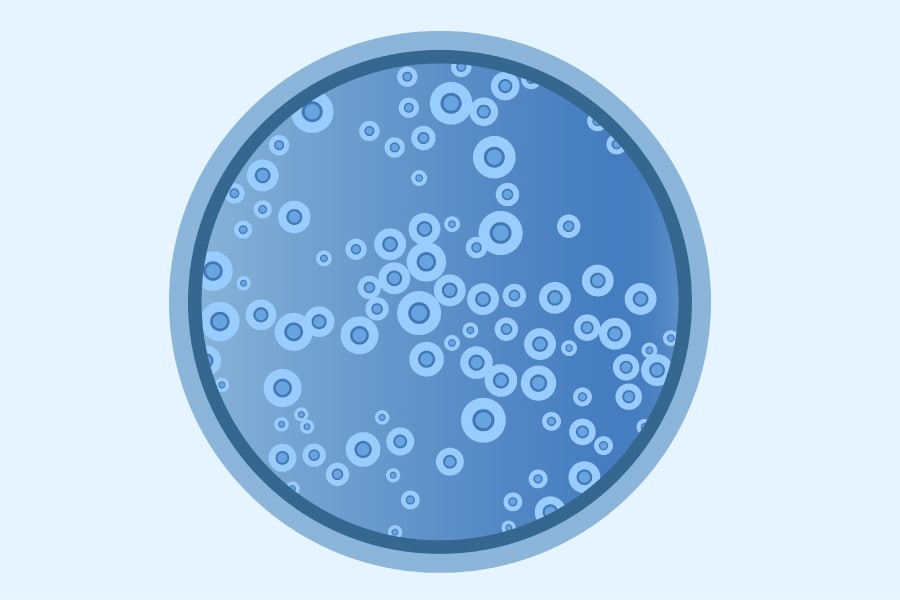Cryptococcic Meningitis: Symptoms, Causes, Treatment
What are the symptoms of cryptococcic meningitis?
Cryptococcal meningitis is a serious fungal infection of the membranes covering the brain and spinal cord. The symptoms of cryptococcal meningitis can vary but may include:
- Headache: Persistent and severe headache is a common symptom of cryptococcal meningitis.
- Fever: Fever is often present, although it may not be very high-grade.
- Stiff neck: Neck stiffness, also known as nuchal rigidity, is a classic symptom of meningitis. It can make it difficult to touch your chin to your chest.
- Nausea and vomiting: These symptoms may occur due to increased pressure within the skull.
- Sensitivity to light: Photophobia, or sensitivity to light, is common in people with meningitis.
- Confusion or changes in mental status: Cryptococcal meningitis can cause confusion, altered mental status, or even coma in severe cases.
- Seizures: Some individuals with cryptococcal meningitis may experience seizures.
- Blurred vision or double vision: This can occur due to increased pressure within the skull affecting the optic nerve.
- Other neurological symptoms: Depending on the extent of the infection, other neurological symptoms such as weakness, numbness, or difficulty speaking may occur.
It’s important to note that symptoms of cryptococcal meningitis can develop gradually and may resemble those of other conditions. If you experience symptoms that suggest meningitis, it’s crucial to seek prompt medical attention from your healthcare provider for proper diagnosis and treatment.
What are the causes of cryptococcic meningitis?
Cryptococcal meningitis is caused by a fungus called Cryptococcus neoformans. This fungus is commonly found in the environment, particularly in soil contaminated with bird droppings, such as those from pigeons. Cryptococcus neoformans can infect humans through the respiratory tract, usually after inhaling fungal spores.
In healthy individuals, the immune system is usually able to control the infection, and the fungus may remain dormant in the body without causing symptoms. However, in people with weakened immune systems, such as those with HIV/AIDS, those taking immunosuppressive medications, or those with other conditions that affect the immune system, the fungus can become reactivated and cause cryptococcal meningitis.
Cryptococcal meningitis is considered an opportunistic infection because it typically occurs in people with weakened immune systems. It is not spread from person to person like a cold or flu but rather occurs when the fungus is inhaled from the environment.
What is the treatment for cryptococcic meningitis?
Cryptococcal meningitis is a serious infection that requires prompt treatment. The primary goal of treatment is to eliminate the fungus from the body and reduce inflammation in the brain and spinal cord. Treatment typically involves a combination of antifungal medications and sometimes procedures to relieve pressure in the brain. Here are the main components of treatment:
- Antifungal medications: The mainstay of treatment for cryptococcal meningitis is antifungal medications. The most commonly used antifungal medication for this condition is amphotericin B, which is often given intravenously. It is usually used in combination with another antifungal medication, such as flucytosine or fluconazole.
- Flucytosine: Flucytosine is often used in combination with amphotericin B for the treatment of cryptococcal meningitis. It is taken orally and helps to enhance the effectiveness of amphotericin B.
- Fluconazole: Fluconazole is an oral antifungal medication that is often used as a maintenance therapy after the initial treatment with amphotericin B and flucytosine. It is typically taken for several months to prevent the recurrence of infection.
- Corticosteroids: In some cases, corticosteroids may be used to reduce inflammation in the brain and spinal cord. They are usually given along with antifungal medications.
- Management of increased intracranial pressure: If the infection has caused increased pressure in the brain, procedures such as a lumbar puncture (spinal tap) or placement of a drain may be needed to relieve the pressure.
- Monitoring: Close monitoring of symptoms, laboratory tests, and imaging studies (such as MRI or CT scans) is important to assess the response to treatment and detect any complications.
Treatment for cryptococcal meningitis is typically prolonged, often lasting several weeks to months. It’s important to complete the full course of treatment as prescribed by your healthcare provider to ensure the infection is fully eradicated. Prompt diagnosis and appropriate treatment can significantly improve outcomes for individuals with cryptococcal meningitis.




